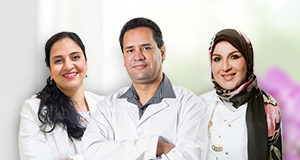Warts are basically an overgrowth of superficial layers of skin, triggered by a contagious viral infection. Known in medical terminology as papillomas, they may emerge anywhere on the body, depending on the specific strain of virus that causes them to develop.
Although warts are not inherently painful, wart removal can be a challenge especially if they tend to recur frequently and appear in significant numbers. The ideal technique would be quick, simple, demand little by way of pre-treatment and post-treatment care and, as with any procedure, aim to keep blood loss and recovery time to the minimum.
RF or Radiofrequency (also referred to as Radio Surgery or Radiowave Surgery) is a highly favoured treatment for removing warts and skin tags. It involves the passage of radio waves into the skin to perform the removal or reshaping of a lesion. Radiofrequency uses low temperature, high frequency energy radio waves to cauterize warts.
RF treatment can cut and coagulate simultaneously without any need for applying pressure. This procedure has gained importance since it is easy to perform. Bleeding is minimal and so is downtime. Radiofrequency is practically free of side effects and complications.
RF works on the principle of using tissue as resistance against high-frequency radio waves delivered at low temperatures.
When a high-frequency wave passes through, the tissue resists its passage, thereby creating heat. This heat increases the inner pressure within the mass of tissue by taking the intracellular water to way above boiling point. The increased pressure makes cell walls break, creating the cutting effect.
As the water in the intracellular tissue vaporises, the heat spreads, coagulating tissue proteins, which in turn brings about haemostasis or stoppage of blood flow, without actually having to burn the tissue as is generally required during such surgery.
A variety of electrodes are used depending on the type of lesion, e.g. fine needle, wire loop or scalpel blade, among others.
Mild discomfort could be experienced during the treatment, which is contained after applying an anesthetic cream. In certain cases however, a local anesthetic may be injected with a small needle.
RF wart removal will give you a bit of swelling, bruising and redness in the area where the treatment was carried out. There will also be tenderness for a few days till the area heals. However, thanks to tissue coagulation, it is unlikely that there will be any bleeding during this treatment or anytime after. Healing is quicker too.
Kaya Wart Removal treatment is simple, safe and effective. However, while you can look forward to getting rid of existing warts, the treatment does not address the underlying causes, and so cannot prevent recurrence.
Do avoid this treatment if you’re pregnant.
- Although pain and discomfort should be minimal, some individuals may feel the need for pain relief. Do check with your dermatologist before taking any painkillers.
- Avoid touching the area as far as possible.
- Avoid exposure to harsh sunlight, and stay away from dusty or sandy environments for at least x days.
- Since this will be a scab that must eventually fall off, is it advisable to keep the area dry for 2-3 days after the surgery.
Please fill in the form below so we can contact you.
Similar Solutions
50% off on Consultation *T&C apply
Recent Post

The Legacy of Emirati Women Achievers
It’s hard not to be moved when you look at the journey of women in the Middle East, especially here in the UAE. For generations, women were expected to stay within certain roles—roles that, let’s be honest, didn’t always allow them to shine as brightly as they were meant to. They were the backbone of…
READ MORE
Please rotate your device
We do not support landscape mode,
please use the website in the portrait mode for best experience.






